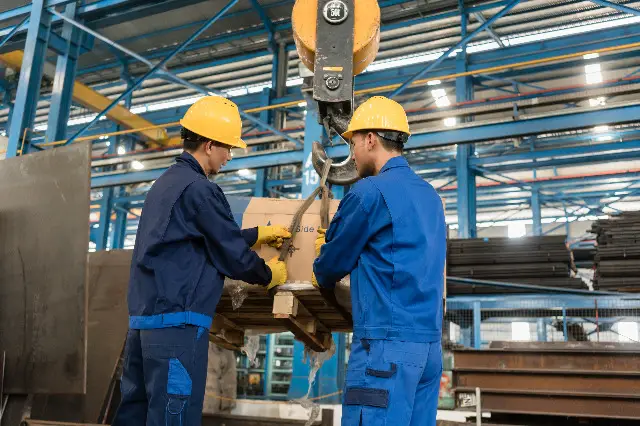
Workplaces must have safety measures in place to minimize accidents. That’s because each mishap can be a double-edged sword as it could affect both the company and the employee. Material handling includes many tasks that could put a worker at risk. They can get an injury, which puts their job at a standstill. The following are ways how material handling can be done safely.
1. Lower Risk Factors With Ergonomics
Anything that increases the likelihood of accidents is a risk factor. This includes improper postures, such as bending and twisting, repetitive movements, and heavy lifting that forces your muscles to exert extreme pressure.
These actions are common in the material handling section. It’s essential to create a helpful guide for in-process handling of pallets, containers, bins, and steel cages packaging items. Especially if they’re loaded with goods ready for shipping. Companies creating various types of packaging, such as Axis Industrial, must follow protocol to avoid materials from falling, endangering the lives of workers, and damaging the contents of the packaging.
The first step is to identify all risk factors in the work environment. It’s imperative to improve control measures to ensure that the workers are only performing tasks they’re fully capable of, without risking their wellbeing.
2. Improve Material Handling Body Mechanics
You should review and revise processes when necessary to ensure the safety of workers. Apply appropriate task operations that are efficient and contribute to a safe working environment. These include:
Lessen the exertion needed to move cargo and other types of equipment.
Provide handles and grips that offer protection and comfort for every worker.
When pulling or lifting, retain a smaller load and a little distance between the hand knuckles and the shoulder.
Asses and reduce the number of times you need to move the equipment and other loads.
Invest in conveyor belts, slides, lift, and hand trucks instead instructing the workers to lift, push, and pull heavy cargo.
Lower the need for bending by placing materials at eye or work level.
Keep the forearms straight while carrying loads.
Keep the load small and close to the body if they need to be taken manually.
There must be adequate space in a storage warehouse for the body to have room for movement.
3. Wear Protective Gear
Workers must not only follow safety measures, but they must also wear the prescribed protective personal equipment or PPE to protect them from possible injuries. Failure to comply will result in accidents that the company can’t be held liable for unless the environment isn’t safe.
Workers must wear protective eyewear, steel-toed shoes, gloves, arm sleeves, and metatarsal guards made of plastic or metal to shield them against impact. At the same time, the plant must provide high-quality PPE that won’t break or tear easily after a few months.

4. Lessen Noise And Vibrations
Plants and areas with massive machinery are prone to noise. Noise and vibrations from loud sounds can cause work-related disorders, irritability, high blood pressure, and fatigue.
To help ease noise pollution and keep workers from developing the mentioned physical and behavioral issues, you can work on the following:
Change, fix, maintain, or modify equipment to produce a smoother or quieter sound.
Provide enough time for breaks so that employees can spend time at quieter places.
Designate an area to place heavy equipment and soundproof the room.
Provide your employees with earplugs or earmuffs that they can use while working.
If possible, set the schedule of noisy equipment late during the day or night shifts, when there’ll be fewer people exposed to sound.
5. Design Appropriate Unit Load And Fleet Management Safety
Adjust the unit load if it’s too big or too heavy. Especially if it’s a single unit or a combination of multiple units into one. A good example is containers for car parts. Unit loads are prepared for distribution, but before logistics handles them, they must first set the configuration, size, weight, and store. Designing the unit load also includes the machine or equipment used for the process. Also, unit loads are arranged depending on the production size.
When it comes to shipping or distribution, proper fleet management should also apply to ensure that driver safety is a priority. It applies to those who operate plant vehicles and shipping. You can use data analytics to monitor driver routes and activity.
In Conclusion
Material handling is a task that requires careful considerations of processes. It ensures the safety of the workers, the quality of the product handling, and the reputation of the workplace. An environment that doesn’t act on reckless actions and reports of mishandling is dangerous and not fit to operate. When the workers feel safe and valued, their morale rises, and productivity improves.
The post 5 Material Handling Tips For A Safer Workplace appeared first on Mike Gingerich.
Read more: mikegingerich.com









